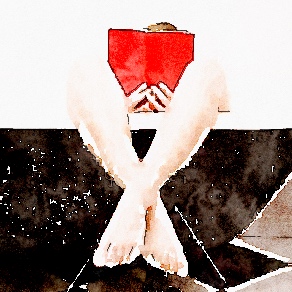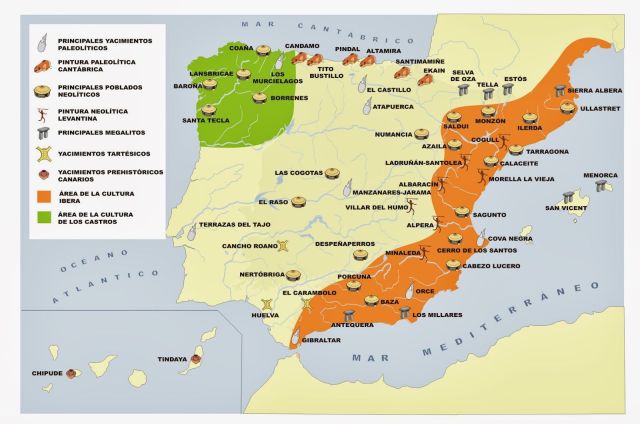Quote of the Week / La cita de la semana

There are paintings, statues, retables, altarpieces, from small, forsaken churches scattered all over the provincial and diocesan museums in Spain. How can something that was originally in a sense utilitarian turn into a work of art? Utilitarian: an image that served to instruct people about their faith. The frescoes recounted the Bible to the faithful who came to the church and who could not read, the statues were there to be adored, to be invoked in prayer. So now they have been pu ton display in art galleries, side by side with comparable specimens. The content of the story told by the paintings has evaporated for most visitors, only the form counts now. Few people, except students of art history, can still distinguish the symbols of the evangelists, still know about the Old Men of the Apocalypse, are still familiar with the attributes of the martyrs. Religion is transmuted into art, because stories become images that signify only themselves. The twentieth-century viewer observes a narrative that he can no longer interpret, to which he has grown blind.
Por todas partes, en museos provinciales y diocesanos hay pinturas, esculturas, retablos, cuadros de altares de iglesias pequeñas y abandonadas. ¿Cómo puede cambiar algo que seguramente fue un objeto de uso corriente y convertirse en un objeto artístico? Objeto de uso corriente: una imagen para explicar algo a los hombres sobre su fe. Estos cuadros contaban una historia a los hombres que venían a la iglesia y no podían leer, las imágenes estaban allí para ser adoradas, para suplicar algo. Ahora están en salas, acompañadas por otras imágenes del mismo estilo y colocadas en fila. La historia en los cuadros ha perdido ya para la mayoría de los visitantes su significado, ahora cuenta sólo la forma. Únicamente el estudiante de arte conoce aún los símbolos de los cuatro evangelistas, aún sabe algo de los Antiguos, del Final de los Tiempos, aún conoce lost atributos de los mártires. La religión se convierte en arte, el significado se convierte en forma, las historias se convierten en imágenes que sólo se significan a sí mismas. El observador del siglo XX ve una historia que ya no puede leer, porque está ciego para ella.
(Cees Nooteboom: Roads to Santiago / El desvío a Santiago)
Update to Mondays’ Weekly Quote / Noticia sobre la cita de la semana de los lunes:
These will continue to go ahead as usual but… for the rest of this month you can expect additional quotes on Wednesdays, Fridays and Sundays as well. This is because I’m very busy with Christmas and other things (as I’m sure you all are), and as a consequence I’m making very slow progress on some longer posts I’m currently working on. I’ll fit them in between the quotes as and when they get ready but in the meantime, I hope you’ll enjoy the quotes!
Las citas de la semana seguirán adelante como de costumbre los lunes, pero … durante el resto de diciembre, también publicaré citas adicionales los miércoles, viernes y domingos. Eso porque estoy muy ocupada con la Navidad y otras cosas (cómo todos) y, en consecuencia, hago un progreso muy lento con algunas posts larguísimos en los que estoy trabajando en el momento. Los publicaré entre las citas a medida que estén listos, pero mientras tanto, ¡espero que disfrutéis de las citas!
















 De hecho, la frase nada excepcional ni siquiera comienza a describir el pueblo si llegas por tren (Campo de Criptana está en la línea principal de Madrid a Albacete, la capital de Castilla-La Mancha). Feísimo podría ser una mejor descripción: como en muchas ciudades españolas, la estación de tren está en las afueras, en este caso rodeada de edificios industriales poco atractivo. Afortunadamente, Campo de Criptana es un lugar pequeño y quince minutos a pie te llevará al centro de la ciudad.
De hecho, la frase nada excepcional ni siquiera comienza a describir el pueblo si llegas por tren (Campo de Criptana está en la línea principal de Madrid a Albacete, la capital de Castilla-La Mancha). Feísimo podría ser una mejor descripción: como en muchas ciudades españolas, la estación de tren está en las afueras, en este caso rodeada de edificios industriales poco atractivo. Afortunadamente, Campo de Criptana es un lugar pequeño y quince minutos a pie te llevará al centro de la ciudad.






